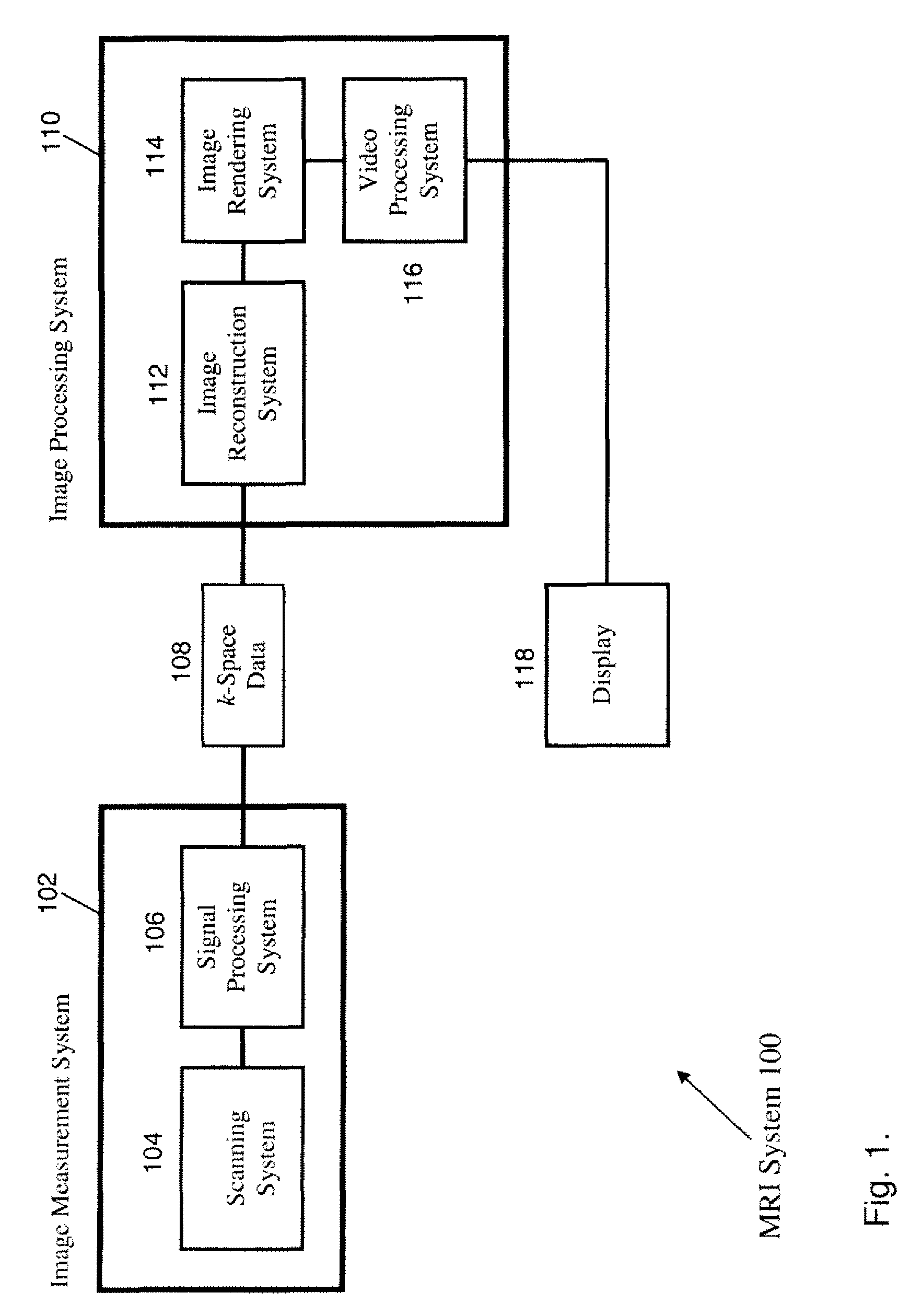Practical image reconstruction for magnetic resonance imaging
a magnetic resonance imaging and image reconstruction technology, applied in the field of medical imaging, can solve the problems of reducing the quality of images, increasing patient discomfort, and prolonging the scan time of patients, and achieve the effect of accelerating the iterative solution process
- Summary
- Abstract
- Description
- Claims
- Application Information
AI Technical Summary
Problems solved by technology
Method used
Image
Examples
Embodiment Construction
[0010]FIG. 1 shows a high-level schematic of the functional architecture of a representative imaging system. In the example shown in FIG. 1, the imaging system is MRI system 100. Embodiments apply to other modalities. MRI system 100 comprises image measurement system 102, image processing system 110, and display 118. Image measurement system 102 may include scanning system 104 and signal processing system 106. Scanning system 104 includes the MRI scanner and associated instrumentation and software. The output of scanning system 104 are radio-frequency (RF) signals which are fed into signal processing system 106. Signal processing system 106 includes hardware and software which converts the RF signals to k-space data 108, which is discussed further below.
[0011]The k-space data 108 is then fed into image processing system 110, which may include image reconstruction system 112, image rendering system 114, and video processing system 116. Image reconstruction system 112, further discuss...
PUM
 Login to View More
Login to View More Abstract
Description
Claims
Application Information
 Login to View More
Login to View More - R&D
- Intellectual Property
- Life Sciences
- Materials
- Tech Scout
- Unparalleled Data Quality
- Higher Quality Content
- 60% Fewer Hallucinations
Browse by: Latest US Patents, China's latest patents, Technical Efficacy Thesaurus, Application Domain, Technology Topic, Popular Technical Reports.
© 2025 PatSnap. All rights reserved.Legal|Privacy policy|Modern Slavery Act Transparency Statement|Sitemap|About US| Contact US: help@patsnap.com



